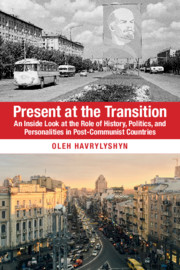 Present at the Transition
Present at the Transition from Part III - Domestic Vested Interests and Reforms
Published online by Cambridge University Press: 04 May 2020
The phenomenon of post-soviet oligarchs in Russia, Ukraine, and others is so well-known it needs little definition; however, how exactly it came about and how this was related to economic reforms is often misunderstood – this chapter relies on extensive earlier studies to summarize the main explanations. Littler-known is the embryonic start of most oligarchs under the partial reforms of Gorbachev, allowing for the first time private enterprise with the 1997–1998 Laws on Cooperatives. With no market liberalization for prices or foreign trade, these new companies could only prosper by using insider connections to intermediate between state firms and thus skim off profits and assets. The cleverest and best-connected rapidly accumulated hordes of cash and established pocket-banks, preparing for future open privatization of state firms. The notorious episode of Loans-for-Shares in Russia may not have been the largest part of actual privatization, but illustrates well the nontransparent quasi-legal “stealing” of state assets that the population saw this to be, and due to this believed that market reforms in general were bad for the people. The reality that this could only happen because reforms were very partial did not change such perceptions, even to the present day.
To save this book to your Kindle, first ensure [email protected] is added to your Approved Personal Document E-mail List under your Personal Document Settings on the Manage Your Content and Devices page of your Amazon account. Then enter the ‘name’ part of your Kindle email address below. Find out more about saving to your Kindle.
Note you can select to save to either the @free.kindle.com or @kindle.com variations. ‘@free.kindle.com’ emails are free but can only be saved to your device when it is connected to wi-fi. ‘@kindle.com’ emails can be delivered even when you are not connected to wi-fi, but note that service fees apply.
Find out more about the Kindle Personal Document Service.
To save content items to your account, please confirm that you agree to abide by our usage policies. If this is the first time you use this feature, you will be asked to authorise Cambridge Core to connect with your account. Find out more about saving content to Dropbox.
To save content items to your account, please confirm that you agree to abide by our usage policies. If this is the first time you use this feature, you will be asked to authorise Cambridge Core to connect with your account. Find out more about saving content to Google Drive.